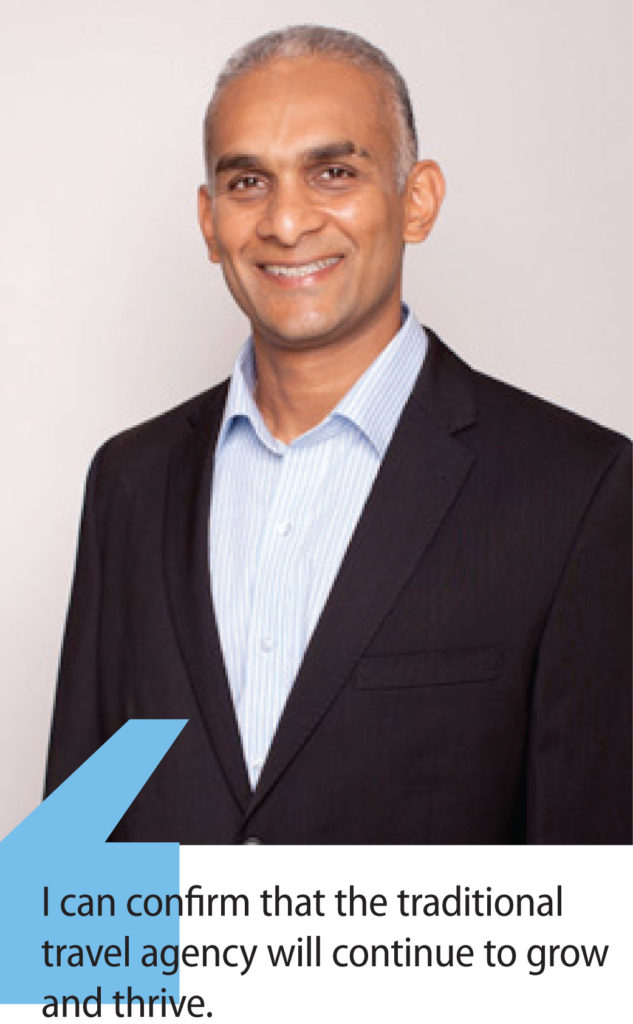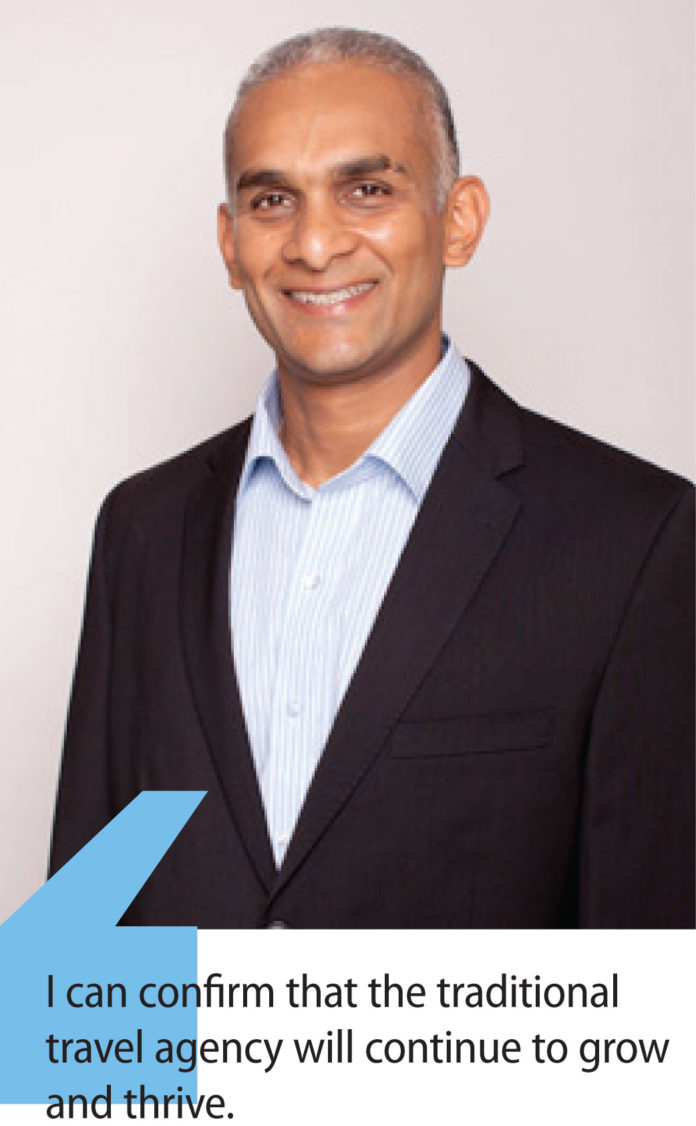It’s been a year since Abacus International became Sabre Travel Network (STN). Raini Hamdi asks Roshan Mendis, who heads STN in Asia-Pacific, what has changed.

What has changed since Sabre gained full ownership of Abacus a year ago?
We have a new organisation, a new leadership team, doubled our investment in product and organised ourselves as part of Sabre global to ensure we get all the goodness of Sabre without losing our Asian heritage, culture and way of doing business that Abacus had been sensitive to.
An example of the more ‘goodness’?
Before (Abacus) didn’t have the ability to leverage much of Sabre global development or global innovation pipeline.
Now, for example, while we retain a product function in the region, we can work with the global development team to ensure that the Asian business gets the necessary investment on things that are important for the region.
When you came in a year ago, you told me you wanted to meet all the travel agencies and understand how business was changing for them. What are your findings?
Firstly, the traditional agencies are feeling rapid competition from online entrants, both locally and internationally.
Secondly, they are feeling the pressure from customers demanding more of them, making it necessary for them to be better equipped and better informed about pricing, trends, destinations, etc.
Thirdly, our larger customers who were traditionally one-market customers are becoming regional if not global customers.
So we have been organising ourselves, in terms of our structure, product investment and service models, to better cater to those needs.
Examples?
In terms of the larger agencies becoming regional or global, as part of our reorganisation, we are developing two global customer service centres in Singapore and India (Sabre currently has these centres in Uruguay, Poland and the US), so these customers can access product or service specialists instantly.
It can be on something as tactical as a billing or pricing question to something more complex like ‘how do I price and ticket this multi-stop, multi-airline, multi-class fare?’
I also talked about travel agents feeling the need to be better equipped and informed. We are launching later this year Sabre Red Workspace 3.0, the next-generation desktop that will empower travel consultants to deliver far more seamless and personalised travel experiences – not just itineraries – by combining data-driven insights with intuitive design.
And to enable traditional agencies to have an effective online presence, we are rolling out a number of products, including our next-generation WebStart later this year.
What’s new with WebStart?
With the passing of time, things just get much more sophisticated and capable.
A defining feature of the next-generation WebStart is an online/offline interaction. A customer can shop online, make a reservation, then walk into a traditional store and have the agent pull out that reservation and fulfil it. Or vice versa: they can walk into a store, book a trip, go home and talk to their family about it, pull out the reservation online and confirm it.
We’re also looking to equip agencies who are new to having an online presence with the basic level of e-commerce marketing, so not only will they have an online presence but effective marketing in channels new to them such as Google, Facebook and TripAdvisor.
You had B2C experience with Zuji and Travelocity. What new perspectives can you offer agents now that you’re on the GDS side?
My observation from other parts of the world, even in online markets that are more mature, is that there is space for both online and offline players to grow their respective businesses – as long as they’re innovating and continuing to bring value to their customer.
We pride ourselves in being strategic partners to our customers, so we often find ourselves in the room with our customers thinking ‘what are the differentiating elements of our business? Which of those are sustainable?’ together.
Through this process we learn what their needs are, then match our products with their needs. If we don’t have a product that matches those needs, then we either build it or bring in a third party that can fulfil the role.
What are the differentiating elements of agencies today?
There are travel agencies that differentiate themselves on a very unique service level. There are agencies that differentiate themselves on running robust corporate travel programmes. There are those that differentiate themselves by just having ubiquitous presence.
There’s no way travel agencies will die?
I can confirm that the traditional travel agency will continue to grow and thrive.
Why?
Because we have seen that in markets where the OTA business has grown, it’s not necessarily at the expense of the traditional travel agencies, but by bringing new travellers into the market.
What motivates you in the job?
I’m now coming to 20 years with Sabre, and in those 20 years I haven’t had a job for longer than three years, so I got to do a lot of different and exciting things under the same organisation. That includes Zuji, Travelocity and now Abacus’ integration into Sabre.
The industry is a fascinating business and I have had the benefit of being on the online side for a number of years and now coming back to the GDS side and having OTA customers. What motivates me also is the rapidly changing business and having constituents that have been around for as long as Sabre has been – in excess of 50 years – along with some brilliant young startups that are looking to disrupt the environment. There’s never a dull moment!
In the past 12 months from the word go, we have rebranded ourselves, restructured ourselves and rightly skilling ourselves with the right people to achieve our goals and objectives (most recent was the appointment of Todd Arthur as vice president sales and market development, replacing Brett Henry).
And with the product investment that has gone into Asia-Pacific, I’m excited about how well poised we are for growth in this region.
This article was first published in TTG Asia, July 8, 2016 issue, on page 10. To read more, please view our digital edition or click here to subscribe




















